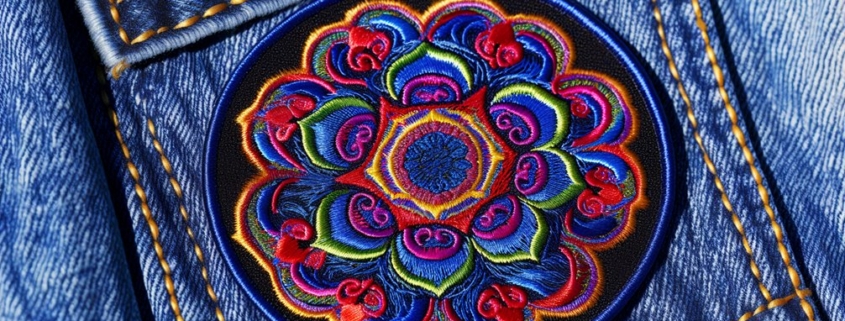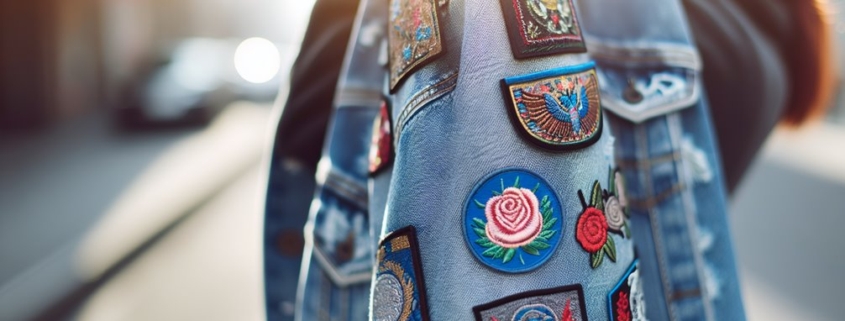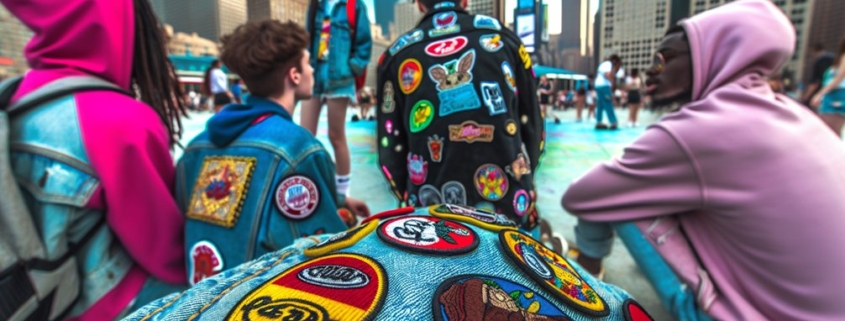Incorporating Artistic Designs Into Custom Fashion Patches
in Artistic Designs, Custom Patches, Fashion PatchesIncorporating artistic designs into custom fashion patches requires a harmonious blend of creativity and technical skill, with a keen appreciation for cultural elements. Designers often draw inspiration from color theory and cultural symbolism, enhancing the patch’s visual appeal and emotional depth. Advanced techniques, such as embroidery layering and digital design tools, enable the creation of intricate and precise patterns. Material choice, including fabrics like cotton and twill, affects durability and aesthetic quality. Brands and artists collaborate to highlight cultural narratives, ensuring patches become unique pieces of wearable art. Understanding these elements can transform simple patches into impactful fashion statements.
- Collaborate with artists to infuse cultural narratives and personal stories into unique patch designs.
- Utilize digital tools for precise manipulation of colors and intricate patterns in patch creation.
- Apply color theory to enhance visual appeal and evoke desired emotions in patch designs.
- Choose durable materials like cotton and twill to ensure longevity and resilience of patches.
- Personalize patches to reflect individual cultural significance and preferences for unique self-expression.
Artistic Inspiration of Colors
Artistic inspiration for custom fashion patches often stems from a diverse array of sources, reflecting the unique individuality and creative expression of designers. One major influence is color theory, which plays a vital role in the design process. Understanding how different colors interact can transform a patch from ordinary to extraordinary, enhancing its visual appeal. Designers meticulously select color palettes that evoke specific emotions or convey certain messages, ensuring that each patch resonates with its intended audience. The interplay of colors is not merely aesthetic; it is a powerful tool that can shape perceptions and highlight the essence of a design.
Embedding Patches in Culture
Cultural influences also greatly impact the artistic inspiration behind custom patches. Designers often draw upon rich cultural histories and traditions to imbue their creations with deeper meanings. This can include symbols, patterns, and motifs that reflect cultural identities and narratives. By incorporating these elements, designers pay homage to diverse heritages, celebrating global diversity while crafting unique and meaningful patches. Designers need to approach cultural influences with respect and understanding, ensuring that their work honors the origins and significance of the elements they incorporate, thereby fostering appreciation and inclusivity in fashion design.
Techniques for Unique Designs
Creating unique designs for custom fashion patches involves a blend of innovative techniques and meticulous craftsmanship. Understanding and applying various design techniques can transform simple patch concepts into engaging artistic elements. One effective approach is the use of embroidery layering, which adds depth and texture, making designs more dynamic. Additionally, incorporating digital design tools can greatly enhance precision and detail, allowing for intricate patterns that were previously challenging to achieve by hand.
Technique | Description |
Embroidery Layering | Adds depth by layering threads for a three-dimensional effect. |
Digital Design Tools | Utilizes software to create precise and intricate patterns. |
Color Theory | Guides the use of colors to influence aesthetic appeal and emotional impact. |
Cultural Motifs | Incorporates traditional or abstract designs for unique character. |
Choosing the Right Materials
Selecting the right materials is essential in the creation of custom fashion patches, as it directly influences durability and looks. A well-chosen fabric guarantees the patch withstands wear and tear while also capturing the design’s artistic intricacies. Fabric selection is the cornerstone of this process, involving choices that affect the patch’s longevity and visual impact. Cotton, felt, fusing, polyester and twill are popular options due to their resilience and ability to hold detailed embroidery. Each material presents unique advantages; for instance, twill is known for its strength and smooth surface, which makes it ideal for crisp, clear designs.
Embroidery Styles and Trends
In the domain of custom fashion patches, embroidery styles and trends play a vital role in defining the visual appeal. Traditional embroidery, characterized by its intricate hand-stitched patterns, remains a cornerstone of the craft. These age-old techniques emphasize precision and skill, with each stitch contributing to a rich tapestry of color and texture. However, as fashion evolves, contemporary techniques have emerged, blending the retro with the new to create innovative designs that capture the modern aesthetic patching.
Understanding the current trends in embroidery is important for anyone involved in custom fashion patches. It guarantees that designs are not only visually striking but also resonate with the intended audience. Staying informed about these trends can greatly impact the effectiveness and appeal of custom patches in the competitive fashion landscape.
Digital Design Innovations
The advent of digital design innovations has revolutionized the creation and customization of fashion patches, offering unprecedented levels of detail and creativity. With the integration of digital tools, continuous updated versions of software, designers have more room to play with stitching and keep the artistic approach into fashion patches, exploring limitless possibilities that were once constrained by manual techniques.
However, with great power comes the necessity for skilful handling. Digital tools require proficiency to maximize their potential, emphasizing the importance of dedicated learning and practice. Mistakes in digital design can lead to costly revisions, underscoring the need for precision and careful planning. As fashion continues to evolve, embracing digital design innovations will be essential for designers aiming to stay ahead in a competitive landscape.
Customization for Personal Style
For individuals seeking to express their unique identity, customization of fashion patches offers a remarkable avenue for personal style. These patches serve as potent tools for personal expression, allowing wearers to communicate their individual tastes and cultural significance through distinct designs. As society increasingly embraces diversity, the demand for personalized patches grows, highlighting their role in showcasing one’s individuality.
Customization not only reflects personal style but also embeds cultural narratives, making each patch a storytelling medium. By choosing specific colors, symbols, and themes, users can connect to their heritage and personal experiences. The importance of these elements in fashion patches is profound, as they often represent more than mere aesthetics.
Element | Significance |
Color Palette | Conveys mood and cultural identity |
Symbols | Represents beliefs and traditions |
Themes | Connects personal history |
Material Choice | Reflects sustainability preferences |
Design Details | Showcases artistic creativity |
Understanding the depth of customization allows individuals to make informed choices about their fashion patches.
Collaborations With Artists
Many fashion patches gain unique character and artistic depth through collaborations with talented artists. These artist partnerships allow brands to infuse creativity and originality into their collections, guaranteeing that each patch tells a unique story. By working with diverse artists, brands can offer innovative designs that break conventional fashion norms, making each piece a statement of individuality and artistic expression.
Collaborative collections between brands and artists result in patches that are not only art-compelling but also culturally significant.As a result, fashion patches become more than just accessories; they transform into portable canvases of art.
- Enhanced Creativity: Collaborations often lead to unexpected and original designs, pushing the boundaries of conventional patch aesthetics.
- Cultural Significance: Artist partnerships bring cultural narratives and personal stories to the forefront, enriching the patch’s meaning.
- Unique Branding: By aligning with artists, brands can differentiate themselves in the market, offering exclusive designs that appeal to niche audiences.
Such partnerships require careful consideration and mutual respect to guarantee that both the brand’s vision and the artist’s creative integrity are maintained.
Impact on the Fashion Industry
Custom patches have become pivotal elements in redefining contemporary style and branding, revolutionizing the fashion industry. Their impact transcends mere aesthetics, integrating sustainability practices and cultural influences into mainstream fashion. As the fashion industry grapples with environmental concerns, custom patches represent a sustainable alternative. By allowing designers to repurpose existing garments, these patches reduce waste and promote the durability of clothing, aligning with eco-friendly trends.




